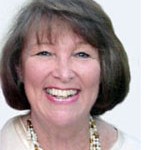By Cynthia Citron

LOS ANGELES — Friends who have similar personalities and mannerisms sometimes joke about being “twins separated at birth.” It’s not a joke, however, to a set of triplets born in New York in 1961. They were together in the hospital until they were six months old, at which time they were separated and given to their adoptive parents, who had not been told that their new son had been born with two other brothers.
Each pair of parents were told that their new baby would be taking part in a “scientific research project” to follow the development of an adopted child and the related parenting roles of their new parents.
And so Bobby became Bobby Shafran, the son of a prominent doctor and his wife, an attorney, who made their home in Scarsdale, a wealthy suburb north of Manhattan. Eddy became Eddy Galland, the son of a teacher, and grew up in a middle-class community on Long Island. David Kellerman became the son of a blue collar father and mother who owned a grocery store in Brooklyn and spoke English as a second language. Yet David’s father became a loving presence to all three boys later, after they had found each other. They called him “bubala” as a sign of their affection for him.
Bobby was the one who brought them together. On his first day as a freshman at Sullivan County Community College, one of the 64 campuses of the State University of New York, he was greeted warmly, with hugs and kisses and slaps on the back. He was amused at first, but was puzzled that everyone addressed him as “Eddy”.
Finally, he was approached by a young man who was a friend of Eddy’s and had his phone number. When Eddy answered the phone, Bobby was dumbfounded. “I was talking to me!” he said. And so Bobby and his new friend took off at breakneck speed, getting a ticket on the way, and arrived at Eddy’s home late that night. They knew immediately that they were twins—they were identical.
A local newspaper reporter told their story, and it made splash that reached all the way to Brooklyn, where David saw their picture and recognized that he belonged with them. He called Eddy and when Eddy’s mom answered the phone David told her that he was the third triplet. At that point Eddy’s mother dropped the phone and shouted,”My god, they’re coming out of the woodwork!”
And so the three, after 19 years apart, began their life together. Their story made headlines all over the world and they appeared on every television talk show and in every popular magazine. They danced and drank at every “in” restaurant and club in New York and were mobbed by people who admired their exuberance and joie de vivre. “It was like a big Bar Mitzvah,” Eddy said.
But after living together in a New York apartment and opening a restaurant called Triplets in Soho and making a million dollars in the first year, things suddenly turned dark for each of them. As they looked back at their childhoods as “research experiments” and the years of being probed and questioned and tested and filmed, they reacted finally with anger and depression.
The results of the research were never published, and the question of whether “nature or nurture” influenced how a child developed, one of the main questions that was posed by the study, was never resolved. But a memorable film was made about the three young men in which archival photos of them from infancy to adulthood were shown and they appeared as narrators to tell their story. The documentary, titled Three Identical Strangers premiered at the 2018 Sundance Film Festival, where it won the U.S. Documentary Special Jury Award for Storytelling, and when it was released in theaters this past summer it was given a 96% approval rating by Rotten Tomatoes.
While this film had only a brief run in theaters, you can download it free on your computer from YouTube, Netflix, or https://decider.com. It goes well with a glass of wine.
*
Citron is a freelance writer specializing in theater and film reviews. She may be contacted via cynthia.citron@sdjewishworld.com